About Guernsey's

The History of Guernsey's
For four decades Guernsey's has built a reputation as an auction house known for the presentation
of extraordinary properties. From the largest auction in history (the contents of the ocean liner
S.S. United States) to vintage racing cars on to pre-Castro Cuban cigars and the $3 million McGwire
baseball, we have few rivals when it comes to the presentation of wildly diverse art and
artifacts.
Guernsey's also has brought some of the most famous and intriguing personalities of the 20th
Century to auction — from the official Elvis auction featuring items from the Graceland
archives to documents and artifacts relating to the life and career of John F. Kennedy and from
record setting sales of Jerry Garcia's guitars and items from the family of Mickey Mantle.
The Beginning
In 1975, the world of art and antiques at auction was indeed a very conservative
place. Auctions were being conducted in either of two ways. At the one extreme, Christie’s and
Sotheby’s (then known as Sotheby’s Parke Bernet) were providing the only valid venues
for the sale of fine objects. The area they involved themselves with however, was limited to
pre-Twentieth Century objects. Rare was the event that included material from the last hundred
years. 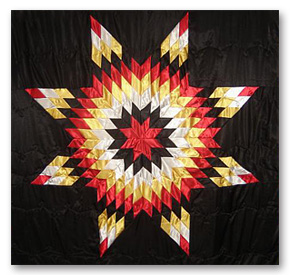 Indeed, the two hundred
and fifty year histories of those organizations almost demanded that they focus their efforts on the
distant past. Within the auction world, the other extreme were hundreds of auctioneers scattered
throughout the United States and Europe who conducted small-scale auctions almost exclusively of
inexpensive, non-specialized commodities. Typical of those kind of events in the U.S. were the
“local Saturday morning auction held in a barn” that routinely might be found in a
picturesque New England or other rural setting. Although fun to attend, logic dictated that were a
rare and valuable object to surface in one of those sales, it would purely be by accident.
Surprisingly, perhaps the only thing both type of auctions shared was the fact that neither applied
aggressive sophisticated marketing skills to increase their audiences.
Indeed, the two hundred
and fifty year histories of those organizations almost demanded that they focus their efforts on the
distant past. Within the auction world, the other extreme were hundreds of auctioneers scattered
throughout the United States and Europe who conducted small-scale auctions almost exclusively of
inexpensive, non-specialized commodities. Typical of those kind of events in the U.S. were the
“local Saturday morning auction held in a barn” that routinely might be found in a
picturesque New England or other rural setting. Although fun to attend, logic dictated that were a
rare and valuable object to surface in one of those sales, it would purely be by accident.
Surprisingly, perhaps the only thing both type of auctions shared was the fact that neither applied
aggressive sophisticated marketing skills to increase their audiences.
The “local” auctioneers – in truth – were incapable of applying advanced marketing techniques to expand their businesses. Although it could be argued that they lacked the sophistication to mount multi-pronged marketing campaigns, simply put, the commodities they were selling didn't warrant it. When one’s commission was ten or twenty percent of a sale that might gross ten or fifteen thousand dollars, the notion of budgeting fifty or one hundred thousand dollars for the marketing of such an event would have been absurd. Larger auction houses, on the other hand, had both the sophistication and high grossing events that would suggest that complex marketing techniques were called for; they just seemed unwilling to apply them.
Founders
 Barbara Mintz and Arlan Ettinger
were young New York advertising executives in the early 1970’s. Barbara was with a large firm
where she served as an account executive; Arlan was with a smaller firm, heading its creative and
production departments. Years before, the couple had established Barlan Enterprises, Ltd., a New
York corporation created to assist them in their increasing interest in collecting.
Barbara Mintz and Arlan Ettinger
were young New York advertising executives in the early 1970’s. Barbara was with a large firm
where she served as an account executive; Arlan was with a smaller firm, heading its creative and
production departments. Years before, the couple had established Barlan Enterprises, Ltd., a New
York corporation created to assist them in their increasing interest in collecting.
Barbara was developing an active interest – and keen eye – in the field of American folk art and primitive Americana. Arlan’s interests largely focused on sporting automobiles (sports and racing cars) of the 1950’s, artwork from the Works Progress Administration (WPA) and other specific genres of art. Beyond these areas, the couple shared interests in many other fields of collecting. In several instances, these were fields that were rapidly emerging and were the objects of interest to a new generation of collectors.
As the couple’s vision of expanding their collections grew, it became increasingly apparent that there were no auction venues focusing on their fields of interest. Finding that the concept of an auction house was an exciting one where the individual’s desire to acquire was placed in a competitive environment, the notion of creating a new auction company geared to emerging areas of interest to new collectors was born. The world of advertising had stood the couple well, providing them both with a working knowledge of modern day marketing. But now they felt they were ready to move on, to strike out on their own. By forming a new auction “house,” they could apply their knowledge of marketing while focusing on fields in which they had personal interest. The fit seemed perfect. Therefore, in 1975, into a conservative, polarized auction world, Guernsey's was born.
35 Years Ago…
It was chilly, drizzly day in March when an elderly Kenneth Lynch called us. He explained that his life had been devoted to creating metal and stone decorative objects of all descriptions. As it often happens in business, a percentage of the objects created by Mr. Lynch remained unsold. Now in his late eighties, these objects were scattered around his Wilton, Connecticut property. "Could we," he asked, "produce an auction of these leftovers?”

Before we could answer, Mr. Lynch went on to let us know that virtually every other sizable auction house - including Sotheby’s and Christie’s - had viewed this “collection,” each claiming that the items were essentially worthless and that, at best, the collection might sell for $20,000.
Undaunted, we met with Mr. Lynch and indeed, the massive number of items he had did appear to simply be a pile of junk. But during that meeting, we had the sense that there might be more to this story than met the eye. Indeed, as we inquired about this gentleman’s past, we discovered that Kenneth Lynch had fabricated many extraordinary and important objects including the globe being supported by Atlas at NYC’s Rockefeller Center, the gates at St. Patrick’s Cathedral, and the famous eagle-like figures atop the Chrysler Building. In the 1920’s, Kenneth Lynch had made repairs to the Statue of Liberty!
Once our research revealed Mr. Lynch’s illustrious past (the other firms were totally in the dark about this gentleman’s background), we proceeded with the auction.
Mr. Lynch, who is pictured above along with Cardinal John O’Connor, the Archbishop of New York, and Guernsey’s founders Barbara Mintz and Arlan Ettinger, gifted the New York Archdiocese over $4 million, the proceeds from Guernsey’s auction!
A Style Develops
Throughout the late 1970’s, the newly formed Guernsey's began building
a reputation for utilizing innovative and aggressive marketing techniques to propel its youthful
image. By the early 1980’s, the company was “hitting its stride.” Until 1983,
Guernsey's auctions focused largely on American folk art. The firm had rapidly built a
reputation for presenting vintage American quilts… conducting full-blown quilt auctions in
diverse venues ranging from New York City’s prestigious Park Avenue Armory to
“floating” events held every summer on board NYC’s Circle Line cruise ship.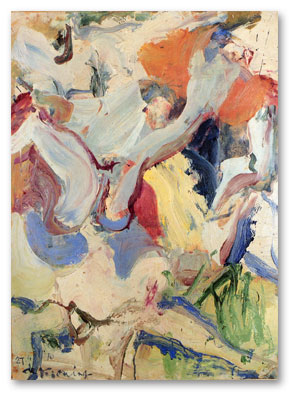 In 1983, everything changed when
the firm held its first truly major sale: an auction of ninety-six carved wooden animal figures that
had previously been part of once-loved carousels.
In 1983, everything changed when
the firm held its first truly major sale: an auction of ninety-six carved wooden animal figures that
had previously been part of once-loved carousels.
The auction house had taken an unloved commodity crafted mostly in the earliest days of the twentieth century and proved how it could get an audience to spend amounts that there-to-fore had only been spent on well established commodities such as Renaissance and Impressionist Art or fine European antiquities. Guernsey's followed its first major success with one landmark event after another. Among the most memorable of those was the first sale of artwork from the former Soviet Union and the contents of the ocean liner SS United States. (The largest auction – in terms of numbers of items sold – ever held.)
The sale of artwork of the Soviet Union was a great challenge to produce (as many of Guernsey's
events have been.) In this case, not only was there no precedent for the sale – at auction or
otherwise – of this style of art, but indeed the Soviets at that time were an enemy of the
United States!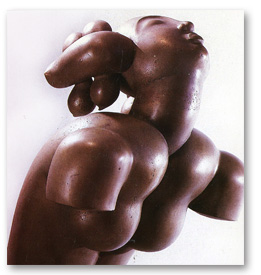 Simultaneously, the task of
bringing to our shores approximately one thousand works of art – many of which were
monumental-sized sculptures – was a formidable undertaking. But in truth, such challenges have
become part of the reputation of which Guernsey's is greatly proud.
Simultaneously, the task of
bringing to our shores approximately one thousand works of art – many of which were
monumental-sized sculptures – was a formidable undertaking. But in truth, such challenges have
become part of the reputation of which Guernsey's is greatly proud.
Beginning with the political barriers the auction came up against (both in Moscow and in Washington) and ending with the logistics of moving massive items (from a land with an exceedingly poor infrastructure for such an operation) to our shores was daunting. Ultimately, not only was the event a financial success but it established a market for this type of work that remains today as seen in galleries throughout this country and much of the rest of the world. Consistent with many of Guernsey's events, the auction served as a vehicle whereby corporate affiliations were developed to mutual advantage. For example, Stolichnaya worked closely with Guernsey's to introduce to the public three new flavored vodkas, using the auction and its promotion as a platform for the introduction.
The Largest Auction Ever Held
The SS United States was the largest, most acclaimed ocean liner ever built in
this country. It traveled between England and New York from its maiden voyage in 1951 to its final
one in 1969. Thereafter, it sat in “moth-balls” in Norfolk, Virginia until it was
purchased by a syndicate with designs for the ship’s re-emergence. Plans for refurbishing her
called for the removal and destruction of the contents filling the two thousand rooms aboard. From
the linens to the lifeboats to the equipment on the bridge, everything was scheduled to be dumped
into the Atlantic! 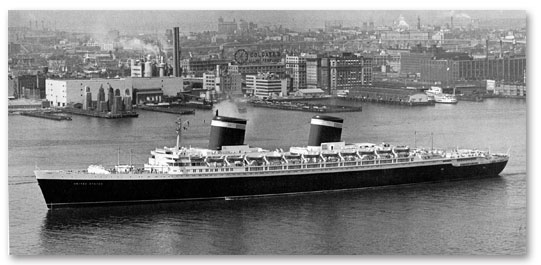 On hearing this, Guernsey's
quickly arranged to meet with the ship’s new owners and suggested the notion of an auction.
On hearing this, Guernsey's
quickly arranged to meet with the ship’s new owners and suggested the notion of an auction.
The syndicate was so enthused with the proposed concept, they went directly to the world’s two largest auction houses! If in fact it was such an exceptional and large project, why not go to the biggest houses, they reasoned. Those auction houses found the project so complex, so physically demanding (particularly if the rapidly upcoming deadline set by the ship’s owners was to be met) that they felt conducting the event was virtually impossible. At that point, Guernsey's proposal was accepted.
The rest is history. Guernsey's produced the event within the three month deadline it was given. Millions were indeed raised instead of millions being spent. And the record stands to this day that the event was indeed the largest auction ever held.
Rockin' and Ready to Roll
 In 1995, Guernsey's
began preparations for a multi-consignor auction to be entitled “40 Years of Rock and
Roll.” Part-way through the project, Christie’s and Sotheby’s announced that they,
too, would be conducting auctions of rock and roll related material and that their auctions would
precede Guernsey's event by about a month.
In 1995, Guernsey's
began preparations for a multi-consignor auction to be entitled “40 Years of Rock and
Roll.” Part-way through the project, Christie’s and Sotheby’s announced that they,
too, would be conducting auctions of rock and roll related material and that their auctions would
precede Guernsey's event by about a month.
Discouraged – but not deterred – by the confluence of all three sales, Guernsey's continued its efforts to unearth the most significant material possible relating to this popular form of music. Included in the segments of the Guernsey's event was a body of material from New York’s famed Apollo Theatre, now a non-profit institution. Additional segments included nearly two hundred examples of Rock-era guitars more than 25,000 rare recordings!
While the other auctions each contained hundreds of lots and grossed six-figures amounts, the Guernsey’s auction took four days to conduct and generated millions of dollars for the firm’s consignors. Virtually every world record price for this type material was indeed broken during this landmark event.
Homage to Our Presidents
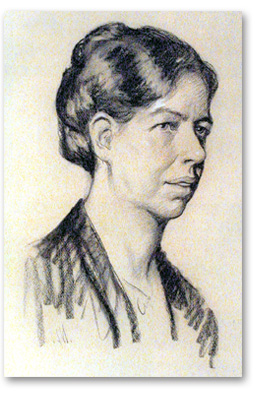 In 1998, Guernsey’s
conducted the first of its two auctions focused on the life and career of President John F. Kennedy.
The inch thick catalogue produced for the event documented the extraordinary artifacts and documents
included in the unprecedented event. With previews at The New-York Historical Society (NYC’s
oldest museum) and the auction at the Park Avenue Armory, the world’s media flocked to cover
the sale while buyers participated from around the globe. As one might have assumed, prices were
extraordinary and included $1 million each being spent on the late President’s wristwatch and
briefcase. The surprise of the auction was a Kennedy-owned yacht that was bid to an astounding $6
million!
In 1998, Guernsey’s
conducted the first of its two auctions focused on the life and career of President John F. Kennedy.
The inch thick catalogue produced for the event documented the extraordinary artifacts and documents
included in the unprecedented event. With previews at The New-York Historical Society (NYC’s
oldest museum) and the auction at the Park Avenue Armory, the world’s media flocked to cover
the sale while buyers participated from around the globe. As one might have assumed, prices were
extraordinary and included $1 million each being spent on the late President’s wristwatch and
briefcase. The surprise of the auction was a Kennedy-owned yacht that was bid to an astounding $6
million!
 Guernsey’s followed its own 1998
Kennedy Auction by selling the famed Robert White Collection in 2005. A life-long Kennedy collector,
Mr. White’s family chose Guernsey’s to present his museum-quality Collection at auction.
Buyers not only came to the Park Avenue auction site but participated on-line from everywhere as
prices matched the levels of the first Kennedy Auction years earlier. Noteworthy among the thousands
of items sold were important hand written notes from the late President and First Lady and the flags
that flew from the Dallas motorcade.
Guernsey’s followed its own 1998
Kennedy Auction by selling the famed Robert White Collection in 2005. A life-long Kennedy collector,
Mr. White’s family chose Guernsey’s to present his museum-quality Collection at auction.
Buyers not only came to the Park Avenue auction site but participated on-line from everywhere as
prices matched the levels of the first Kennedy Auction years earlier. Noteworthy among the thousands
of items sold were important hand written notes from the late President and First Lady and the flags
that flew from the Dallas motorcade.
Guernsey’s involvement with American Presidents didn’t stop with John F. Kennedy. Indeed, the firm’s auction entitled “The Presidency” featured items relating to many Presidents and included the rarest Presidential White House flags, previously unseen White House photography and the magnificent collection of White House engraved and handwritten invitations from the late Sanford Fox, assistant to eight consecutive Presidents.
Guernsey’s yet again became immersed in important Presidential documents and memorabilia when the firm began preparations for the Franklin Delano Roosevelt Auction. The extraordinary, inherited collection that was consigned to Guernsey’s (imagine a magnificent oversized handwritten four-page letter from Benito Mussolini to FDR calling for world peace just before the outbreak of WWII) was in the process of being catalogued when Guernsey’s was able to interest several parties in buying the collection intact. The negotiations that ensued resulted in a private treaty sale netting our consignors amounts so high that it was hard for them to imagine.
Private Treaty Sales
 Just as the FDR Collection was a
negotiated “private treaty” sale, so were sales Guernsey’s has conducted of such
important art works as the Franz Kline Jazz Collection. Currently, Guernsey’s is proudly
representing the entire Deer Lake Training Camp of Muhammad Ali for sale.
Just as the FDR Collection was a
negotiated “private treaty” sale, so were sales Guernsey’s has conducted of such
important art works as the Franz Kline Jazz Collection. Currently, Guernsey’s is proudly
representing the entire Deer Lake Training Camp of Muhammad Ali for sale.
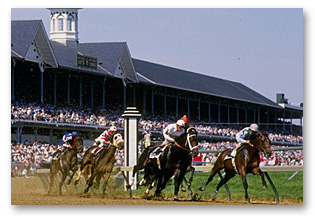 The following is a further example
of Guernsey's diverse skills. Guernsey’s was approached by a team of attorneys appointed
by the Federal Bankruptcy Court relating to the high profile bankruptcy of Calumet Farm, the
legendary thoroughbred horse racing stable. Due to the controversy swirling around an apparent
improper appraisal of Calumet's spectacular Racing Trophy Collection provided by one of
Guernsey's largest competitors, that auction house was removed and a replacement sought. After
careful scrutiny by the Court, Guernsey's was chosen. In short order, Guernsey’s
re-appraised the substantial Trophy Collection (among its five hundred and fifty awards were eleven
magnificent trophies won for the Kentucky Derby) at a level several times that of its competitor.
Given only thirty days to produce results, the firm was able to sell the Collection for an amount
considerably in excess of the appraisal, thereby satisfying the many creditors involved in the
bankruptcy. That the Collection, largely through Guernsey's efforts, was permanently gifted to a
prominent Kentucky-based museum, brought joy to both Kentuckians and horse lovers around the globe.
The following is a further example
of Guernsey's diverse skills. Guernsey’s was approached by a team of attorneys appointed
by the Federal Bankruptcy Court relating to the high profile bankruptcy of Calumet Farm, the
legendary thoroughbred horse racing stable. Due to the controversy swirling around an apparent
improper appraisal of Calumet's spectacular Racing Trophy Collection provided by one of
Guernsey's largest competitors, that auction house was removed and a replacement sought. After
careful scrutiny by the Court, Guernsey's was chosen. In short order, Guernsey’s
re-appraised the substantial Trophy Collection (among its five hundred and fifty awards were eleven
magnificent trophies won for the Kentucky Derby) at a level several times that of its competitor.
Given only thirty days to produce results, the firm was able to sell the Collection for an amount
considerably in excess of the appraisal, thereby satisfying the many creditors involved in the
bankruptcy. That the Collection, largely through Guernsey's efforts, was permanently gifted to a
prominent Kentucky-based museum, brought joy to both Kentuckians and horse lovers around the globe.
The Unique at Auction
 For many years, Guernsey’s
handsome letterhead has sported the above slogan “The Unique at Auction.” A short review
of some of Guernsey’s more innovative auctions would clearly give credence to those words. For
example, Guernsey’s was the first auction house to present auctions consisting entirely of
vintage sports and racing automobiles. Although general car auctions had been held since the
1960’s, Guernsey’s was the first to recognize the emergence of the sports and racing car
as objects of serious interest to collectors. And so, from the early 1980’s on, the screaming
exhausts of vintage Ferraris, Maseratis and Aston Martins could be heard on massive fields in
Bridgehampton and Greenwich and within the confines of NYC’s convention centers as
Guernsey’s auctioneers banged down the gavel on one stunning machine after another.
For many years, Guernsey’s
handsome letterhead has sported the above slogan “The Unique at Auction.” A short review
of some of Guernsey’s more innovative auctions would clearly give credence to those words. For
example, Guernsey’s was the first auction house to present auctions consisting entirely of
vintage sports and racing automobiles. Although general car auctions had been held since the
1960’s, Guernsey’s was the first to recognize the emergence of the sports and racing car
as objects of serious interest to collectors. And so, from the early 1980’s on, the screaming
exhausts of vintage Ferraris, Maseratis and Aston Martins could be heard on massive fields in
Bridgehampton and Greenwich and within the confines of NYC’s convention centers as
Guernsey’s auctioneers banged down the gavel on one stunning machine after another.
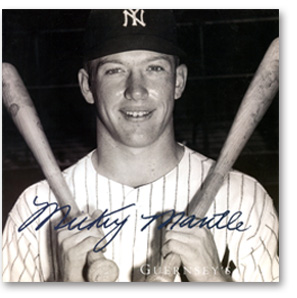 Noteworthy among other
Guernsey’s “firsts” were auctions covering the fields of science fiction, horror
(the motion picture variety), the animal in art, illustration, comic and cartoon art. The firm has
conducted landmark auctions featuring tons (literally) of architectural artifacts and garden
ornamentation. Guernsey’s Graffiti (art) Auction is still spoken of years after it introduced
that exciting genre of art to the auction world, while memories of the Topps Auction (Topps being
the leading producer of trading cards) still causes sports collectors to swoon. Guernsey’s
“out-of-this-world” auction of meteorites believed to have originated from Mars brought
in experts from the British Museum while the firm’s Dinosaur Auction attracted interest from
all corners of the globe.
Noteworthy among other
Guernsey’s “firsts” were auctions covering the fields of science fiction, horror
(the motion picture variety), the animal in art, illustration, comic and cartoon art. The firm has
conducted landmark auctions featuring tons (literally) of architectural artifacts and garden
ornamentation. Guernsey’s Graffiti (art) Auction is still spoken of years after it introduced
that exciting genre of art to the auction world, while memories of the Topps Auction (Topps being
the leading producer of trading cards) still causes sports collectors to swoon. Guernsey’s
“out-of-this-world” auction of meteorites believed to have originated from Mars brought
in experts from the British Museum while the firm’s Dinosaur Auction attracted interest from
all corners of the globe.
Perhaps most unusual of all was Guernsey’s auction of close to 200,000 pre-Castro Cuban cigars. Discovered in Spain and inherited by an American, this massive collection was unable to be brought into the States due to the embargo on Cuban products. Guernsey’s petitioning of the government resulted in the embargo being lifted (believed to have been the one and only time this has occurred) to allow the cigar collection in. Following front page write-ups on many of the nation’s most prominent newspapers, the auction produced extraordinary results as individual boxes of twenty five cigars often brought thousands of dollars each.
Out of the Park Home Runs
 In early 1999, the world was
stunned when Guernsey's sold a single baseball for more than $3,000,000 (Three Million Dollars),
an astounding twenty-three times the existing world record. The previous record of $126,000 was set
only months before the Guernsey’s event when Sotheby’s sold a famed ball hit by the
legendary Babe Ruth. At the baseball auction Guernsey’s conducted live at Madison Square
Garden (and broadcast around the world by CNN), many records toppled (a Hank Aaron ball fetched
nearly $1 million), but it was the ball hit by Mark McGwire that not only smashed the record for a
baseball but became the most expensive object relating to the world of sport ever sold!
In early 1999, the world was
stunned when Guernsey's sold a single baseball for more than $3,000,000 (Three Million Dollars),
an astounding twenty-three times the existing world record. The previous record of $126,000 was set
only months before the Guernsey’s event when Sotheby’s sold a famed ball hit by the
legendary Babe Ruth. At the baseball auction Guernsey’s conducted live at Madison Square
Garden (and broadcast around the world by CNN), many records toppled (a Hank Aaron ball fetched
nearly $1 million), but it was the ball hit by Mark McGwire that not only smashed the record for a
baseball but became the most expensive object relating to the world of sport ever sold!
The aforementioned baseball auction was notable for many reasons. It was the first auction where a traditional auction house employed the use of the Internet to bolster an event. Guernsey's permitted eBay to become involved in the sale by allowing bidders to bid on-line in “real time.” And although the event was to be the first of several that have demonstrated that “serious spenders” still prefer to participate “live” at auctions (in person or on the telephone), Internet bidders participated actively on the less expensive items in the sale. The auction was broadcast live by CNN nationally, an absolute first. Millions of viewers were able to watch as the dramatic auction unfolded. (Copies of that CNN broadcast are available.) Indeed, the auction was one of the first to be cited as a truly “global” event with media coverage everywhere. Be it in central Europe, the central U.S. or central Asia, the world has tuned in to the excitement of Guernsey's auctions. (CNN recently mentioned to Guernsey's that news coverage – based upon a ranking system they utilize – listed several of Guernsey's auctions as the most widely covered news stories in the world at the time the events took place!) Click here to watch the video
Supporting our finest Museums, Non-Profit Organizations and Municipalities
Guernsey's has conducted dignified and important events on behalf of many of America’s finest museums. Be it the sales of the Henry Ford Museum’s Collection of Transportation or the Wisconsin Historical Society’s Circus Collection or the appraisal of the Smithsonian’s Puppet Collection, Guernsey’s has been honored to represent these fine institutions. The company has proudly raised funds on behalf of non-profit, charitable organizations including The Special Olympics, The American Cancer Society, The Juvenile Diabetes Foundation, the T.J. Martell Foundation and UNICEF. Arlan Ettinger, as continuing president of Guernsey's, lectures at the graduate school level and is a consultant to the International Revenue Service, the Federal Bankruptcy Court system and other organizations in need of Guernsey's assistance.
When the owners of Coney Island’s (NYC) last surviving carousel came to Guernsey’s to sell the mechanism and the forty-four horses on it, Guernsey’s saw the bigger picture. Indeed, it would have been easier to sell these objects one by one, but that might well have been the “death blow” to the area many think of as the birthplace of the amusement park. Instead, Guernsey’s urged the City of New York to consider making the purchase. After serious negotiations and agreeing to pay a world-record purchase price, Mayor Michael Bloomberg announced that the City of New York would be featuring the carousel in a major revival of that famed area.
The King at Auction…
 One of the most remarkable auctions
ever held was conducted when Guernsey's presented thousands of items directly from the archives
of Graceland – the family estate of Elvis Presley. Almost thirty years after his death, Elvis
remains one of the most well recognized, popular figures of Twentieth Century. Collecting material
related to the entertainer has been described as the current “leading hobby on earth.”
The auction was held at Kirk Kerkorian’s MGM Grand resort in Las Vegas. Guernsey's chose
Las Vegas as the ideal setting for an Elvis auction and was pleased to work hand in hand with the
top executives of what is considered the single dominant venue in that dynamic and unique city. For
years, Graceland had been contemplating a major auction designed to raise funds to build both a
village (Presley Place) to assist the homeless of Memphis and create new exhibition facilities.
Following years of consideration, Guernsey's was chosen for the assignment. The resulting event
was described in the press as “the most extraordinary auction of items relating to the popular
culture ever held.”
One of the most remarkable auctions
ever held was conducted when Guernsey's presented thousands of items directly from the archives
of Graceland – the family estate of Elvis Presley. Almost thirty years after his death, Elvis
remains one of the most well recognized, popular figures of Twentieth Century. Collecting material
related to the entertainer has been described as the current “leading hobby on earth.”
The auction was held at Kirk Kerkorian’s MGM Grand resort in Las Vegas. Guernsey's chose
Las Vegas as the ideal setting for an Elvis auction and was pleased to work hand in hand with the
top executives of what is considered the single dominant venue in that dynamic and unique city. For
years, Graceland had been contemplating a major auction designed to raise funds to build both a
village (Presley Place) to assist the homeless of Memphis and create new exhibition facilities.
Following years of consideration, Guernsey's was chosen for the assignment. The resulting event
was described in the press as “the most extraordinary auction of items relating to the popular
culture ever held.”
From the perspective of the MGM Grand – which provided its facilities to Guernsey's without charge, upping Guernsey's profit picture from the event – the auction was the best single event in the history of that vast complex. In a letter to this effect, the President of MGM Entertainment cited the auction’s ability to attract unprecedented media attention to the hotel/casino as its strongest benefit. With the success of that event, strong friendships between Guernsey’s and the MGM Grand/Mirage Corporation have developed with thoughts to future use of the Las Vegas facilities for similar purposes. Guernsey’s has developed similar friendships with the Hard Rock Organization – Hard Rock Cafes, Hard Rock Hotels, and Universal Studios, which has affiliations with Hard Rock – which already has lead to events Guernsey’s has conducted on that organization’s principal Orlando, Florida site.
Prior to the Graceland Auction, an alliance was formed between Guernsey’s and publisher Harry N. Abrams. The Abrams organization, long recognized as one of the finest publishers of high quality “coffee table” style books, agreed to distribute Guernsey’s Graceland catalogue around the world through retailers including Barnes and Noble and Borders, Books and Music. The book was chosen as a Book-of-the-Month-Club selection and sold out its run of 50,000 copies. Interestingly, a number of Guernsey’s catalogues that document rare collectibles, have become collectibles in their own right!
A War, and a Princess, Too
In December of 1999 – on the eve of the millennium – Guernsey’s presented what many considered the “gift of the century.” In a remarkable one lot auction, Guernsey’s sold a magnificent necklace and matching earrings worn by Princess Diana. The sale benefited UNICEF, the international children’s fund that Diana cared so much about.
Following the Diana event, Guernsey’s conducted what many consider the defining auction focusing on the Civil War. The handsome halls of The New-York Historical Society were filled with the rarest objects from the Blue and Gray featured in the landmark event.
Jerry and the Mick would have smiled...
In January of 2002, The New York Times reported that a long standing legal battle between the rock group Grateful Dead and a guitar maker named in the Will of the late Jerry Garcia had been resolved. In the pursuit of the guitars that had been the subject of the dispute, Guernsey’s learned that several auction houses had been courting the ultimate victor for more than two years in an effort to win the guitars. Guernsey’s entered the fray and after arduous competition, won out. The battle was clearly worth it as Guernsey’s featured the guitars in a 200 lot auction held at NYC’s famed Studio 54 where they set new world records for the most money ever spent for guitars. The previous record for any guitar was $450,000; Guernsey’s sold the Garcia guitars for $959,000 and $789,000 respectively.
Just before the holidays in 2003, Guernsey's conducted the Mickey Mantle Auction on behalf of Mickey's Family. Baseball fans reveled in the standing-room-only crowd attending the auction at Madison Square Garden. As tears flowed from both the participants at the auction and members of the Mantle family (who were in attendance), the fact that virtually every conceivable world record was demolished for the types of items in the sale seemed to be of minor importance compared to the overall joy everyone experienced from being at this once in a lifetime event.
Exciting Venues
Among Guernsey’s accomplishments in 2005 was the remarkably popular Jazz Auction, held at the just-opened Jazz at Lincoln Center, part of the fabulous billion dollar Time Warner complex. A packed theater marveled at offerings related to such jazz greats as John Coltrane, Charlie Parker, Thelonious Monk, and Louis Armstrong. Jazz fans and museums alike vied for the chance to own one of the many instruments played by the legendary musicians or one of their handwritten sheets of music.
The defining auction of artifacts relating to the Titanic filled a Guernsey’s auction conducted at New York City’s famed South Street Seaport Museum. The salty air set just the right tone for this remarkable event.
Legendary Clients
Guernsey’s 2006 activities were crowned by The Dick Clark Auction, which contained thousands of Rock and Roll items from one of America’s – and the world’s – most beloved entertainment icons.
Arguably the greatest Rock and Roll collection ever to come to auction, the sale featured genuine treasures from many of the biggest names in the world of Rock. The smallest sampling includes John Lennon, Elvis Presley, Paul McCartney, Madonna, Bruce Springsteen, Bob Dylan, James Brown, Kiss, Aaliyah, Mick Jagger, Michael Jackson, the Beach Boys and many others.
The Rosa Parks Archive
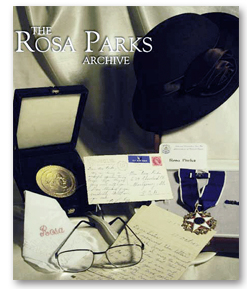 High-quality, high-visibility
projects continue to be Guernsey's forte. One of Guernsey's greatest honors came when it was
asked by the Michigan Courts to inventory and appraise the thousands of items owned by Mrs. Rosa
Parks, "Mother of the Civil Rights Movement." Once the inventory was completed,
Guernsey's was then officially appointed by the Michigan Courts to represent the entire Rosa
Parks Archive, considered by many to be the most important body of material to be presented in our
time.
High-quality, high-visibility
projects continue to be Guernsey's forte. One of Guernsey's greatest honors came when it was
asked by the Michigan Courts to inventory and appraise the thousands of items owned by Mrs. Rosa
Parks, "Mother of the Civil Rights Movement." Once the inventory was completed,
Guernsey's was then officially appointed by the Michigan Courts to represent the entire Rosa
Parks Archive, considered by many to be the most important body of material to be presented in our
time.
Guernsey’s role was to assure that this compelling and historic material found a home in one of our nation’s leading museums, universities, or other institutions where it could inspire and educate many generations to come. Through an important transaction negotiated by Guernsey's, the Rosa Parks Archive was acquired by the Howard G. Buffet Foundation, which announced an extended loan of the Archive to the Library of Congress.
Highlights of the Archive are to be unveiled to the public in an exhibit being organized by the Library of Congress, scheduled for Spring, 2015. According to Judge Burton, who presided over the Court in Michigan, this wonderful result would never have come about “if not for Guernsey’s diligent, thorough and multi-year effort to find the right home for this important Archive.”
Tennis Anyone?
Guernsey's became the first auction house in history to conduct an auction in conjunction and in cooperation with a major international sporting event.The firm's Tennis Auction was held at the United States Tennis Association's US Open, the most well attended sporting event in the world! For the full two week duration of the Open (held at the Billie Jean King Tennis Center in New York City), Guernsey's dramatic preview of the historic tennis items up for auction attracted huge crowds. Believe it or not, the 2-day Tennis Auction was held on the days of the tournament finals, as a prelude to both the Men's and Women's Finals.
Tavern on the Green
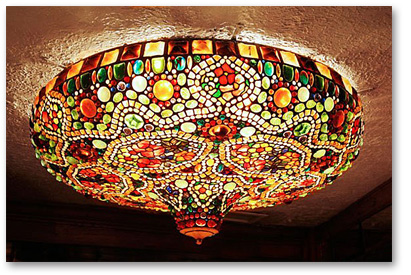 In early 2010, Guernsey's
sold the complete - and we mean "complete" contents of NYC's landmark on the Green
Restaurant. What had been the most visited restaurant in the world had fallen into bankruptcy and
Guernsey's was chosen for the unprecedented sale.
In early 2010, Guernsey's
sold the complete - and we mean "complete" contents of NYC's landmark on the Green
Restaurant. What had been the most visited restaurant in the world had fallen into bankruptcy and
Guernsey's was chosen for the unprecedented sale.
Tavern's fabled stained glass shades (created from magnificent Tiffany glass), its many crystal chandeliers and thousands of other objects that adorned the huge Central Park dining spot passed across the auction block. A separate upscale tag sale was needed to handle objects that time did not permit to be sold during the three-day, massively attended auction.
Guernsey's continues its well-established leadership role within the specialized auction world. With its reputation for being the most aggressive marketing organization, its unrivaled numbers of appearances on American network programming such as The Today Show and Good Morning America and the European and Eastern Rim equivalents, Guernsey's ability to spread the word about its events is unparalleled.
The Beatles and Titanic...what more can we say?
 In Fall 2011, Guernsey's
presented to the world the remarkable Astrid Kirchherr Archive of Beatles photography. Beatles fans
around the world have the greatest admiration for Astrid who, in 1960, not only took the most
compelling photographs of the then young group, but helped mold them into the world famous Fab Four
that they became.
In Fall 2011, Guernsey's
presented to the world the remarkable Astrid Kirchherr Archive of Beatles photography. Beatles fans
around the world have the greatest admiration for Astrid who, in 1960, not only took the most
compelling photographs of the then young group, but helped mold them into the world famous Fab Four
that they became.
Initially slated for auction, Guernsey's was able to sell the entire collection (2,000 photographs, their negatives and copyrights) to a single buyer. This effort was not only meaningful to Astrid (she is now serving as an advisor to the new owners of the Archive), but to Beatles fans worldwide who understand the importance of the preservation of this material.
It has been said that perhaps the most universally recognized word in the human language is "Titanic", referring to the legendary ocean liner that met its tragic end a century ago. Since the ship's discovery 25 years ago lying deep in the North Atlantic, an international effort was mounted to recover artifacts that were strewn across the debris field surrounding the ship. The 5500 recovered items constitute what many view as quite likely the most famous collection of anything on earth. That Guernsey's was chosen in 2012 to represent this remarkable collection is a clear indication of how this auction house is perceived.
The Historic Sachs Poster Collection
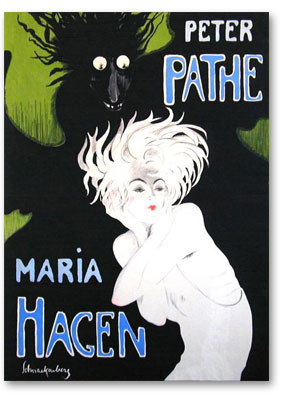 In 1895, a young German Jewish
Doctor Hans Sachs started collecting the beautiful posters he would see plastered on buildings
across Berlin. Noting that these printed posters were often created by the most heralded artists of
the day, he began seeking out posters he could actually own; thus he began what today is considered
the most serious collection of posters ever assembled. The following decades saw Dr Sachs'
collection grow, ultimately resulting in his publishing the highly regarded magazine, Das Plakat.
Unfortunately, on the fateful 1938 date that came to be known as Kristallnacht, Dr. Sachs was
arrested, thrown into a concentration camp and, under the direction of Josef Goebbels, his poster
collection confiscated by the Nazis.
In 1895, a young German Jewish
Doctor Hans Sachs started collecting the beautiful posters he would see plastered on buildings
across Berlin. Noting that these printed posters were often created by the most heralded artists of
the day, he began seeking out posters he could actually own; thus he began what today is considered
the most serious collection of posters ever assembled. The following decades saw Dr Sachs'
collection grow, ultimately resulting in his publishing the highly regarded magazine, Das Plakat.
Unfortunately, on the fateful 1938 date that came to be known as Kristallnacht, Dr. Sachs was
arrested, thrown into a concentration camp and, under the direction of Josef Goebbels, his poster
collection confiscated by the Nazis.
Able to escape the camp, Dr. Sachs and his family fled to the US, where over the years, he was led to believe that his beloved collection had been destroyed during the war. It was therefore quite amazing when in 2005, Dr. Sachs' son discovered that his father's collection consisting of 4300 posters had indeed survived and been located in the vault of a Berlin Museum.
Following a lengthy court battle, the Sachs family was granted possession of the collection and commenced a search for the auction house that could present this most historic and important collection to the world. Beating out our far larger competitors, Guernsey's was selected for this significant consignment.
Recognizing that it could take three auctions to properly sell the collection, the first of the three auction catalogues was created, which included the complete, previously unpublished text of Dr. Sachs' amazing story. Guernsey's was most honored to offer the Hans Sachs Poster Collection at auction. Due to the sheer volume of the collection – over 4,000 posters – a series of 3 auctions has been planned. The first two sales – in January and November of 2013 – resulted in record-setting prices, with many posters destined for museums around the globe. A date for the third and final auction has not yet been set.
Harrisburg Collection
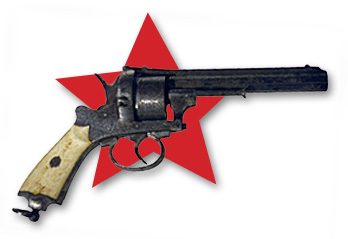 Back in the early '90s, the
Mayor of Harrisburg, the Pennsylvania state capital, saw fit to spend City funds to acquire
thousands of historic antiques to fill a museum he envisioned created to attract tourism. The
primary theme of his acquisitions was the Old West.
Back in the early '90s, the
Mayor of Harrisburg, the Pennsylvania state capital, saw fit to spend City funds to acquire
thousands of historic antiques to fill a museum he envisioned created to attract tourism. The
primary theme of his acquisitions was the Old West.
Although Harrisburg is very much entrenched not far from the Eastern Seaboard, 200 years ago pioneers seeking a new life viewed that city as a gateway to the West and hence the logic behind an Old West museum. In recent years the city has been in financial hard times and with it the critical need to sell off the massive collection (close to 10,000 objects in all) that has been stored for years in local warehouses.
Under the close scrutiny of the Mayor's office, a rigorous Request for Proposal was issued, and of 30 auction firms, Guernsey's came out victorious. The herculean cataloguing effort resulted in a 7-day auction consisting of over 5,000 lots, sold on-site in Harrisburg, and restored millions of dollars to the City's coffers.
Vintage Guitars
Every so often, a remarkable collection is sold at auction. Such was the case with Guernsey's April 2014 "Artistry of the Guitar" auction, offering a stunningly beautiful collection of the finest vintage guitars. Assembled by a gentleman over a period of four decades, the broad array of over 250 instruments included historic Martin, Gibson, Epiphone, Gretsch, Washburn, Stromberg and Larson Brothers guitars, many of which were made even more noteworthy by the legendary musicians who played them.
Urban Archeaology
Jerry Garcia’s Wolf
The Chelsea Doors
For additional information visit www.guernseys.com or contact Guernsey’s at 212-794-2280. For media inquiries or to request an interview, please contact Guernsey's at 212.794.2280 or email us auctions@guernseys.com.